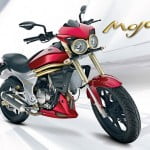In the space of just a few years, GPS-enabled cycle computers have all but taken over from traditional units thanks to ever more competitive pricing, and the wealth of data gathering technology on offer. Helped by the rise and rise of Strava, Garmin has ridden the crest of the wave, offering devices to suit a range of budgets and needs.
The new Edge 25 is the company’s second cheapest bike computer, sitting one rung above the Edge 20 in the range. It’s a spiritual successor to the Edge 200, but smaller, lighter and slightly more capable.
In fact, the Edge 25 is tiny, measuring just 40x42x17mm, and weighing 30g including its mount – that’s only just over half what the Edge 200 came in at, and that was a fairly diminutive object already. All functions are controlled through the four buttons on the 25’s sides, and it uses the same quarter-turn mounting system as all other Garmins.
Where previous units had awkward rubber flaps to cover their charging ports, the Edge 25 has external contacts that mate with a proprietary USB cable. Nevertheless, it’s built to withstand all weathers, with an IPX7 water-resistance rating that means it should survive being immersed 1m deep for 30 minutes without ill effects. During testing, it certainly didn’t mind being rained on vigorously, and dropping it (turned on) into a glass of water for a bit had it equally unfazed.
All basics covered
The Edge 25 provides all the basic metrics you’d expect, i.e. distance, speed, elapsed time and time of day, as well as average speed, estimated calories, elevation, and total ascent. With the addition of extra external sensors, it will also monitor heart rate and cadence (but not power), and as with previous Garmins a speed sensor (which now wraps around the rear hub and needs no separate magnets) will improve the fidelity of speed measurements.
When you ride, one page displays the time, the date and battery life, while the data is spread across two pages, each with three customisable fields. If you use a heart rate monitor, a fourth page shows beats per minute and HR zone, while following a course adds another two to keep you abreast of your progress.
A course, I hear you ask? In addition to collecting data, the Edge 25 offers ‘breadcrumb trail’ navigation – if you load a pre-planned course onto the device it will point you in the right direction, and it even offers turn warnings.

Attachment is via Garmin’s usual quarter-turn mounting system
Annoyingly, you have to use Garmin’s own Connect service to load routes onto the device, a step backwards from other units that simply let you dump a file onto the device when it was connected to a computer. Many users will be on Connect anyway, but for those of us who stick to Strava, it’s irritating.
During testing, the Edge 25 was essentially flawless, and it seemed to achieve its claimed 10 hours of battery life. The interface has some odd quirks, like the fact that you can’t access the settings menu while the timer is running, but once you’re happy with your device setup that ceases to be an issue.
The only potential frustration is that the amount of data you can view whilst riding is relatively limited compared to the Edge 510 and higher models. For the average club rider who wants to log their rides, monitor performance and follow pre-planned routes, it’s ideal. If you’re a full-on data geek or you need proper mapping and extended battery life, you’ll have to spend more or look for a deal on an older device.
[“source-bikeradar”]





